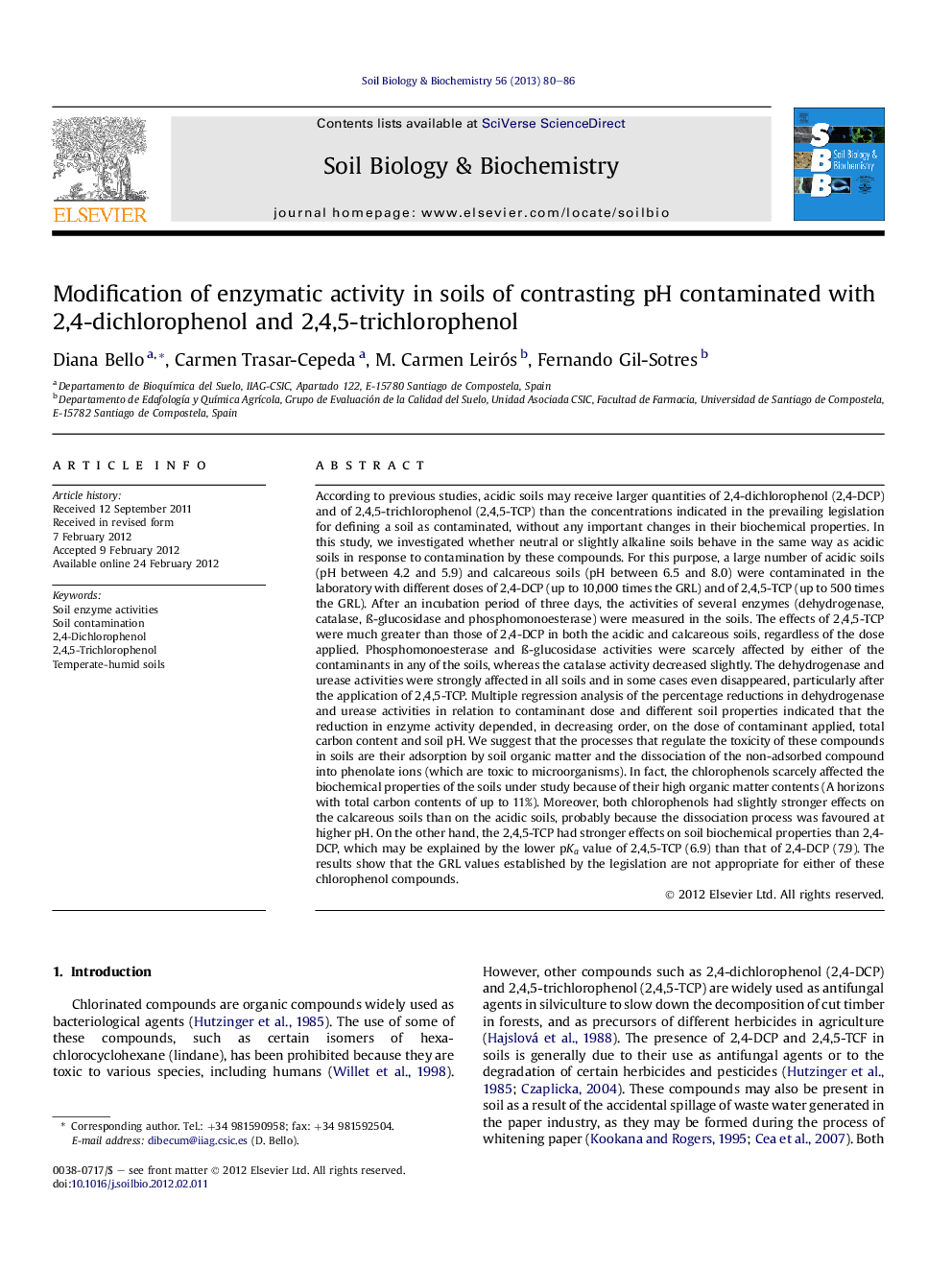| Article ID | Journal | Published Year | Pages | File Type |
|---|---|---|---|---|
| 2024855 | Soil Biology and Biochemistry | 2013 | 7 Pages |
According to previous studies, acidic soils may receive larger quantities of 2,4-dichlorophenol (2,4-DCP) and of 2,4,5-trichlorophenol (2,4,5-TCP) than the concentrations indicated in the prevailing legislation for defining a soil as contaminated, without any important changes in their biochemical properties. In this study, we investigated whether neutral or slightly alkaline soils behave in the same way as acidic soils in response to contamination by these compounds. For this purpose, a large number of acidic soils (pH between 4.2 and 5.9) and calcareous soils (pH between 6.5 and 8.0) were contaminated in the laboratory with different doses of 2,4-DCP (up to 10,000 times the GRL) and of 2,4,5-TCP (up to 500 times the GRL). After an incubation period of three days, the activities of several enzymes (dehydrogenase, catalase, ß-glucosidase and phosphomonoesterase) were measured in the soils. The effects of 2,4,5-TCP were much greater than those of 2,4-DCP in both the acidic and calcareous soils, regardless of the dose applied. Phosphomonoesterase and ß-glucosidase activities were scarcely affected by either of the contaminants in any of the soils, whereas the catalase activity decreased slightly. The dehydrogenase and urease activities were strongly affected in all soils and in some cases even disappeared, particularly after the application of 2,4,5-TCP. Multiple regression analysis of the percentage reductions in dehydrogenase and urease activities in relation to contaminant dose and different soil properties indicated that the reduction in enzyme activity depended, in decreasing order, on the dose of contaminant applied, total carbon content and soil pH. We suggest that the processes that regulate the toxicity of these compounds in soils are their adsorption by soil organic matter and the dissociation of the non-adsorbed compound into phenolate ions (which are toxic to microorganisms). In fact, the chlorophenols scarcely affected the biochemical properties of the soils under study because of their high organic matter contents (A horizons with total carbon contents of up to 11%). Moreover, both chlorophenols had slightly stronger effects on the calcareous soils than on the acidic soils, probably because the dissociation process was favoured at higher pH. On the other hand, the 2,4,5-TCP had stronger effects on soil biochemical properties than 2,4-DCP, which may be explained by the lower pKa value of 2,4,5-TCP (6.9) than that of 2,4-DCP (7.9). The results show that the GRL values established by the legislation are not appropriate for either of these chlorophenol compounds.
► The toxicity of 2,4-DCP and 2,4,5-TCP is compared in soils of different pH values. ► Independently of the soil properties, 2,4-DCP is much less toxic than 2,4,5-TCP. ► The enzyme activities most strongly affected were those of dehydrogenase and urease. ► ß-glucosidase and phosphomonoesterase activities are not affected by chlorophenols. ► The effects of chlorophenols are less intense at lower pH and higher organic matter content.
